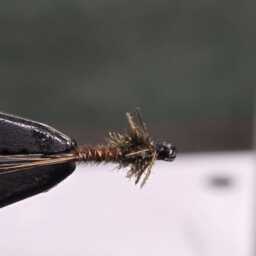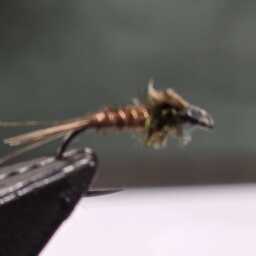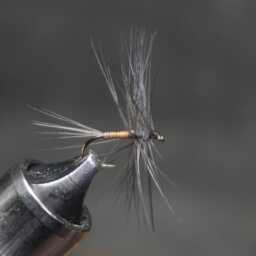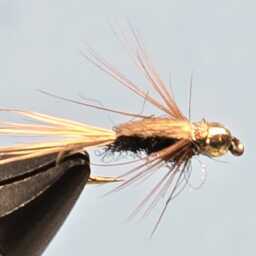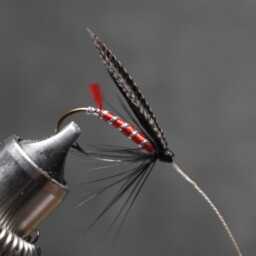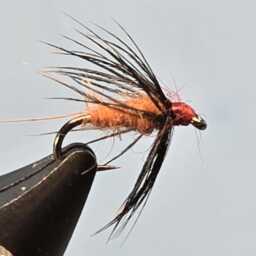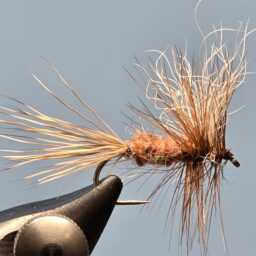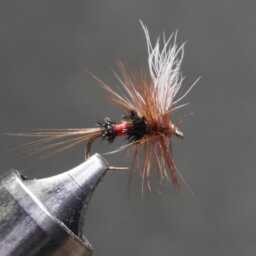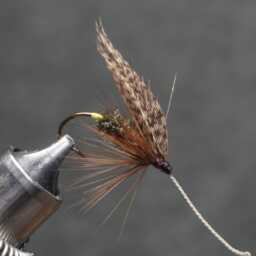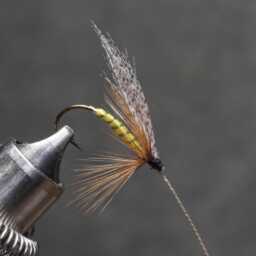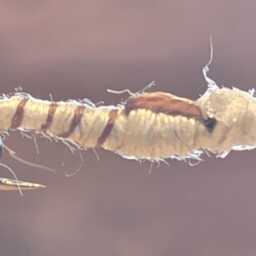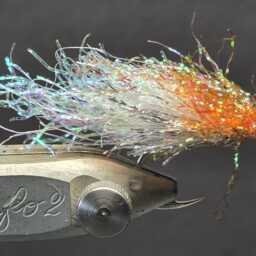The Ringneck Pheasant has several names and subspecies and can be found on numerous continents. All subspecies are similar in appearance but have variations in plumage.
Names can include the “Common Pheasant, Manchurian Pheasant, Ringneck Pheasant, Melanistic Pheasant, Green Pheasant” and is probably the single most used bird in fly tying. The “Church Window” feathers on the back are used in many fly patterns for wings. The green rump feathers have been used on patterns such as Mr. Simpson and can make for some interesting wind cases or nymph legs. Flank feathers are used as the hackle on the famed pattern the “Carry Special” and also make for good nymph wing cases or legs. The black plumage with white tips are one of the most common substitutes for rare feathers such as Toucan or Indian Crow when dyed.
The males tail is probably the most prized feather of the bird and maybe the most used feather in all of fly tying. It’s brownish / olive drab color with distinct black barring is the feather that’s used on the famous “Pheasant Tail Nymph” pattern and is often found dyed in numerous colors.
The female is also extremely useful as good substitute for brown Hungarian Partridge. The plumage is a speckled or mottled brown and can be used for many different applications including a spider style soft hackle. The wing quills are also used in many Caddis patterns.
The tail is used on the Invicta wet fly for the wing but also makes for great nymph tails, wing cases and legs.
The common pheasant, scientifically known as Phasianus colchicus, belongs to the pheasant family, Phasianidae. Its genus name, Phasianus, originates from Latin, meaning “pheasant,” while its species name, colchicus, refers to Colchis, a region near the Black Sea (modern-day Georgia), where Europeans first encountered these birds. Originally native to Asia and parts of Europe such as the northern Caucasus and the Balkans, the common pheasant has been extensively introduced worldwide as a game bird. In regions like Europe where it has naturalized and where no native relatives exist, it is commonly referred to simply as the “pheasant.”
The common pheasant is celebrated as one of the most ancient and widespread gamebirds globally. It is widely hunted and has been introduced to various regions for recreational purposes, often thriving on game farms where it is commercially bred. Particularly in North America, it is known as the ring-necked pheasant, which encompasses several subspecies and hybrids characterized by white neck rings. Remarkably, the ring-necked pheasant holds the distinction of being the state bird of South Dakota, unique among U.S. state birds as a non-native species.
In Japan, the green pheasant (P. versicolor) is sometimes considered a subspecies of the common pheasant, although they frequently hybridize where their ranges overlap. Despite their genetic compatibility, the green pheasant tends to outcompete the common pheasant in its native habitat, which has limited the latter’s successful establishment in Japan.
Male common pheasants exhibit a wide range of color variations, from nearly white to melanistic forms, due to hybridization and selective breeding. These variations are further enhanced by continuous releases into the wild from various sources. Physical characteristics of the male include a long, brown-streaked black tail, vibrant plumage with shades of gold, copper-red, and chestnut-brown, often with iridescent hues of green and purple. Females and juveniles, in contrast, are less striking, displaying a mottled brown plumage.
The green pheasant, resembling the common pheasant, exhibits darker plumage and lacks the distinctive white neck ring. Males typically have a shorter tail and uniform bottle-green coloration on the breast and belly, while females are darker with numerous black dots on their undersides. Both species also exhibit various color mutations, including melanistic (black) and flavistic (isabelline or fawn) forms, such as the Tenebrosus pheasant (P. colchicus var. tenebrosus).
Overall, the common pheasant’s adaptability, coupled with its cultural significance as a gamebird, underscores its global impact and enduring presence in both natural and managed environments.
« Back to Glossary Index
